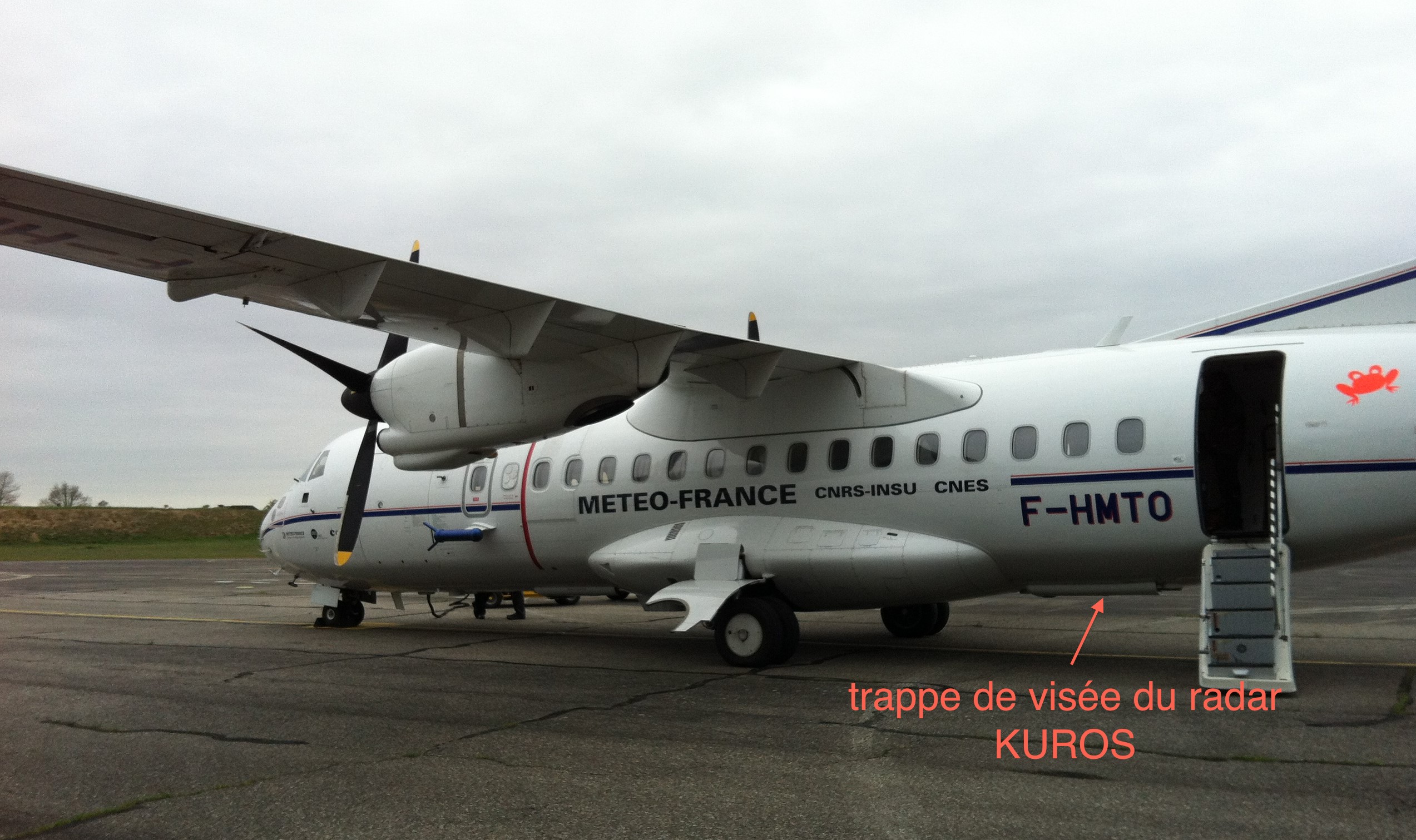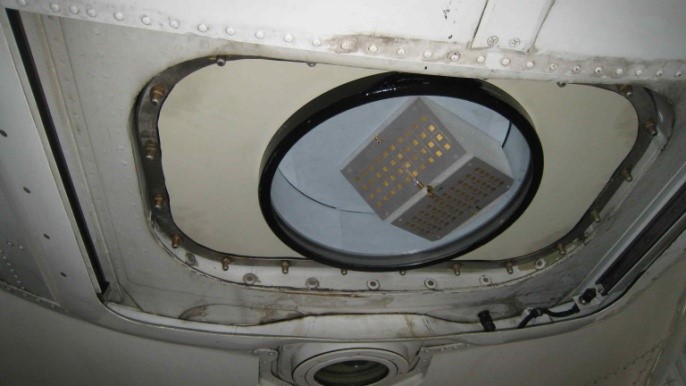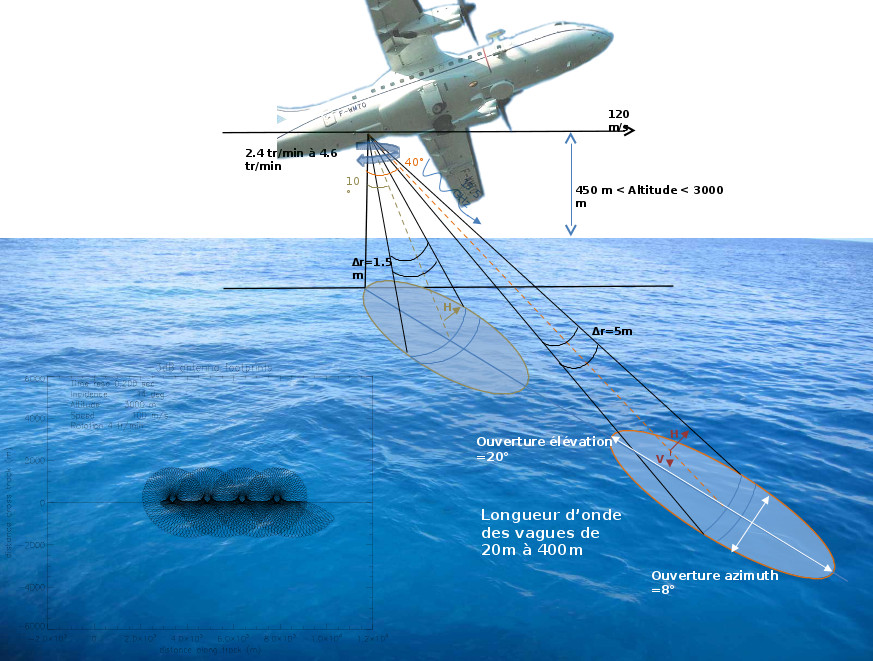General characteristics of the instrument
The KuROS radar is a Ku-band pulse radar. The system uses two antennas, one aiming close to the vertical (10 to 14 ° according to the campaigns), the other around 40 °. The first is called "Low Incidence antenna" or "LI antenna", the second "Medium Incidence" or "MI antenna"
The two antennas sweep in azimuth around the vertical axis. Each illuminates the marine surface with a footprint of several hundred meters for the recommended use altitudes for KuROS (2000 to 3000m). The resolution of the radar (approximately 1.5m for 10 ° antenna, 5 m for 40 ° antenna) gives access to the radar backscattering coefficient (normalized cross-section) with a resolution in the sighting axis of about ten meters.
Picture 1 illustrates the ATR42 aircraft and the location of the sighting hatch under the fuselage. Picture 2 shows the two antennas (antenna array technology) mounted in the hatch, in the configuration of the 2013 campaigns: the two antennas aim through a quartz porthole.


The diagram in Figure 1 illustrates the observation geometry.

The precise characteristics corresponding to the 2013 campaign are described in the article Caudal et al (2014).
Following a major disturbance of the antenna digraph by the window fixing flange (black in the picture), the system was modified in 2015 to allow direct sighting without a window (in an environment outside the pressurized airplane area).
With regard to the characteristics given in the article Caudal et al., 2014 and which relate to the 2013 configuration, some modifications were made in 2015, including new antennas (modified openings), a new implementation of these antennas Of the porthole) and the average incidence of the modified LI antenna (around 14 ° in 2013 and 10 ° in 2015).
